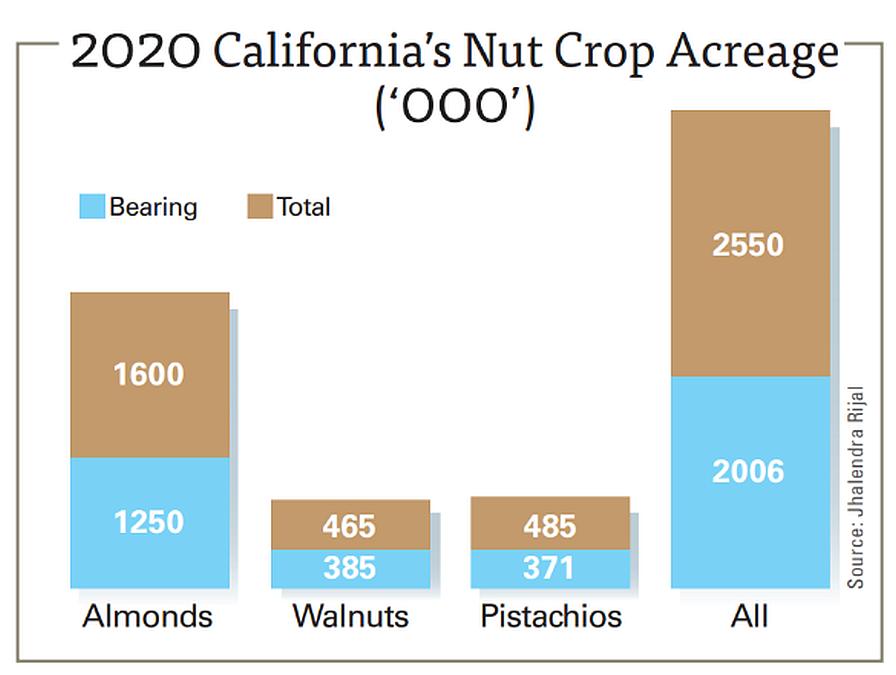Yes! Biosolutions Do Exist for Pest Issues in Walnuts
It’s not easy to get a crowd fired up about walnuts these days. Jhalendra Rijal conceded as much right off the bat at the recent BioSolutionsSM Conference & Expo in Reno, NV, several weeks ago, saying walnut growers are telling him they’re seeing some of the lowest prices in decades.
Rijal, the University of California Cooperative Extension Area Integra-ted Pest Management Advisor, says it’s tough to recommend new approaches in such an environment. However, one of the attractions of certain biocontrol approaches is they are cost-effective and translate across a number of crops.
Of course, that’s because the nuts may differ, but they share some of the same key pests. For example, navel orangeworm (NOW) is not just a nemesis of almonds and pistachios but walnuts as well. Rijal provides a brief look at the top three for walnuts: NOW, codling moth, and walnut husk fly.
TIME FOR NOW
The best practice for walnut growers, as it is for virtually all tree nut growers, is to begin with good winter sanitation, which Rijal calls the foundation of NOW management. He says you have to “reduce overwintering populations by removing the remaining nuts from the ground and destroying them before they emerge as adults in the spring.”
Rijal is not exaggerating when he says destruction is critical. One study shows that simply dumping the mummy nuts in the weeds reduced adult emergence by 24%, double-disking cut emergence by 68%, and shredding, the recommended method, by 97%.
Mating disruption is another approach all tree nut growers, not just walnut growers, have used with good results, he says. A number of commercially available products are available, from puffers to misters, that emit pheromones to confuse the male moths and limit reproduction. Rijal notes a recent California Department of Food and Agriculture-funded collaborative study on a 40-acre walnut block found the incidence of NOW damage reduced by more than 70% as the result of using pheromone mating disruption.
Not a great deal of work has been done in “classic” biocontrol, the use of natural enemies to control problematic pests, Rijal says. However, he notes there is a parasitic wasp, known as Goniozus legneri, that is the most commonly found NOW parasitoid in California.
As for insecticidal control, Rijal says it is critical to compare years of data, as the results can vary widely between years. He notes that in past years’ trials, some biological-based products have actually registered very good results and were comparable to the industry standard conventional pesticides.

CODLING MOTH
Codling moth is traditionally the most important pest in walnuts, though in recent years, Rijal says the codling moth activity has been quite low. In fact, many growers have found no need to spray chemical controls because the combination of low population and mating disruption has taken care of the codling moth.
Mating disruption products come in many forms, so Rijal recommends considering each carefully. Sprayable liquid formulations, in which tiny microcapsules release pheromones, are easy to apply but need multiple applications and have short residual activities (two to four weeks). Timely application targeting the adults for each generation is critical for effectiveness. Plastic (hand-applied) dispensers provide a season-long passive release, good for small- and moderate-sized orchards. Aerosol dispensers release pheromones at programmed intervals. A season-long approach is preferred by many growers, as one application is enough for the entire season.
WALNUT HUSK FLY
When Rijal started, growers asked him how they could stop spraying all season long for this problematic pest. There was no effective IPM program. But then when Rijal studied the pest and began doing field studies, he found the pest was overwintering in just the first few inches of soil.
“If we could do something with the soil, if we could kill the larvae dropped from the tree for overwintering by applying biologicals (entomopathogens) in the soil, that might help to reduce the population in the following year, that was the genesis of the research,” he says.
Since then they have been studying the efficacy of these entomopathogens, research that will continue in the coming year. Rijal says all such biological products need more study.
“We need more research, more demonstration trials, so that people will feel ‘These are the products I feel comfortable using in the field,’” he says.









